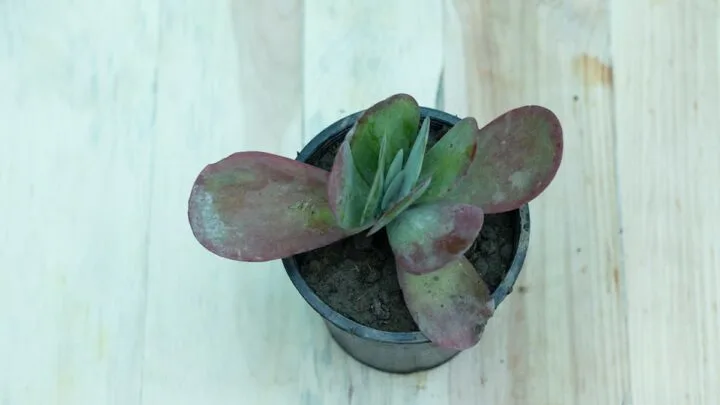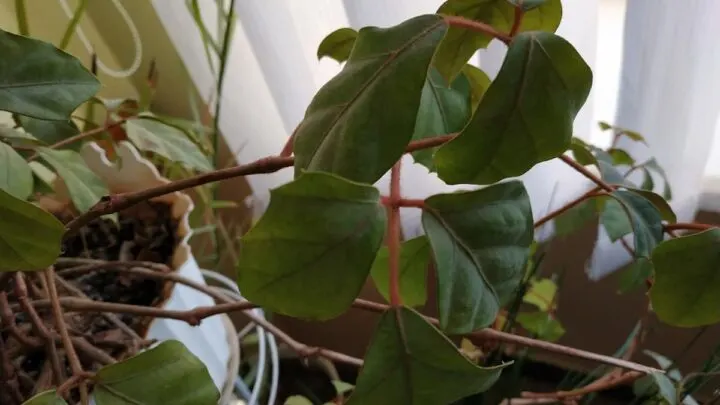Succulents are considered very easy houseplants. They require minimal watering and almost no attention. Some say succulents thrive on neglect.
So when succulents do have a problem, it can be pretty alarming. You may notice their leaves are looking strange.
Why does my succulent have wrinkled leaves?
Your succulent most likely has wrinkled leaves due to a problem with watering. If the leaves look wrinkled and pruney, like fingers that spent too much time in the water, your succulents are overwatered. If your succulent leaves are wrinkled and flat, your succulents need more water.
Read on to discover more about how to take care of your succulents.

How Do You Tell If A Succulent Is Over Or Under Watered?
Succulents are usually considered low-maintenance plants, so it can be stressful for you when they start showing signs of stress. Almost all plants need the same things, water, sunlight, and soil for nutrients. So if something is off with your succulent, it is best to start there.
Is My Succulent OverWatered?
We may think houseplants need lots of water, but this is often not true. Succulents are naturally found in hot and dry areas around the world, where they are used to not getting lots of rain. The rule of green thumb is to water your succulents every 11-15 days allowing the soil to completely dry out between waterings.
So is your succulent overwatered? If the soil is moist or wet to the touch and your succulent leaves are swollen or pruney like fingers that have been in the water too long, most likely.
The solution is simple, let your succulents dry out a little longer before the next watering session. In a few weeks, your succulents should be back to normal.
Should The Soil In My Succulent Pot Be Moist?
No, the soil surrounding your succulent should not be moist unless it was just watered.
If the water surrounding your succulents is too wet or is holding water, you may need to repot your plant—succulents like soil that has good drainage and doesn’t hold extra moisture. You can purchase succulent and cactus-specific soil at your local garden center.
Be sure your pot has a few drainage holes on the bottom so extra water can find a way out. Sitting water and overly wet soil can cause root rot, mold, or other problems for your plants.
You can also use these drainage holes to water your succulents. Place your succulent pot in a bowl filled with room temp water and allow the roots to suck up the water they need for about 15-20 minutes. This technique helps prevent overwatering.

Is My Succulent Under Watered?
Now that you know the dangers of overwatering your succulent, you may wonder if your succulent plant is now underwatered. If you notice the leaves begin to shrivel up, shrink, wrinkle or get crispy, your succulent needs water.
Succulents can store extra water in their leaves, like cactus plants. So when they begin to use up their water reserve, they pull it from their leaves. Succulent plants will begin pulling water from the lower leaves first due to their proximity to the root system. The succulent will then begin pulling water from the remaining leaves working its way up.
It is important to act immediately when you notice a problem with your succulent. Luckily, it is easier to water a dry succulent than dry out a wet one.
Begin watering your plant modestly for a few weeks, and in no time, it will perk back up to its former self. Once the succulent is back in good health, try a small amount of fertilizer to restore nutrients to the leaves. You can find succulent-specific fertilizer online or at your local plant or garden center. Just follow the instructions properly, as too much fertilizer can cause your plant to go into shock.
How Much Light Does My Succulent Need?
Succulents love sunshine. They prefer bright indirect sunlight throughout the entire day. Mature succulents can also tolerate direct sunlight. However, direct sunlight can be too much for a new or infant succulent plant. A south-facing window is a great place to set your succulent to encourage enough sunlight.
Be sure to rotate your succulent throughout the month to prevent the succulent from stretching. This happens when the succulent is reaching for the sun. If your succulent is placed in an area where the light is to the left or the right of the plant, it will begin growing in that direction. It will also begin to stretch itself upward if there’s not enough sunlight.

Can I Grow Succulents Outside?
Yes, you can grow succulents outside. Succulents love heat, and their root systems do not survive a frost or freeze. If you live in a warm area all year round, you could be planting succulents in your garden without a second thought.
If you live in an area with colder seasons, you can grow succulents outdoors in the summertime, but they will not survive the winter to rebloom in the springtime. Some people love the way succulents look in pots or planters and will grow them on their porches or patios. If you choose to go this route, you should bring your pots and planters into your home once the temperature begins to drop.
Does My Succulent Attract Flies?
If you notice an influx of flying insects in your home and you think it is from your succulent, there are some things you can do.
First, check to see if your soil is too moist or is waterlogged. This will attract gnats and mealybugs. Root rot is also a huge concern with wet soil. If you see bugs or eggs on your plants, remove that plant immediately and spray with 70% isopropyl alcohol and water to kill and prevent more bugs.
If your soil is not overly wet and your plant is not rotting, there should be no reason that your succulent has bugs.
Always change your succulent’s soil when moving it back indoors from its summer break on the patio. They are exposed to many more bugs and pests that may try to make a home within their pots in the outdoor world.
In Summary
Succulents make lovely houseplants. They are low maintenance, come in unique varieties, and almost thrive on neglect. These plants require little water and well-draining soil with a lot of sunshine.
If you overwater your succulents, they will prune and swell up. Be sure to keep their soil well-drained and dry. Pick up the proper soil mixture at your local garden center to ensure that your succulent is set up to succeed. Drainage holes are also important when it comes to succulents in pots.
If your succulent is thirsty, it will begin taking water from the lower leaves, working its way up until it has enough water to sustain itself. Water your succulent modestly once every 10-15 days, depending on when the soil has dried out completely.
Succulents are most commonly kept as houseplants, but they can also survive and thrive outdoors. If you live in an environment that gets cold, take your succulents out in the summer but bring them back in before the chill comes. Always repot plants that have been outdoors as bugs could have made a home inside their soil.
Now you know the ins and outs of watering and caring for your succulent plants. Whether you are a new plant parent or an experienced indoor gardener, you are ready to take on your succulent problems confidently!

Hi there, my name is Allie and welcome to my blog; GareningWithAllie!
Much of what you see written here is just our personal experiences with gardening. Along with the content I write here, there is also a unique collection of gardening topics covered by some of our close friends. I hope you find everything you read here to be helpful, informative, and something that can make your gardening journey the most lovely experience ever! With that said, Happy Gardening!
